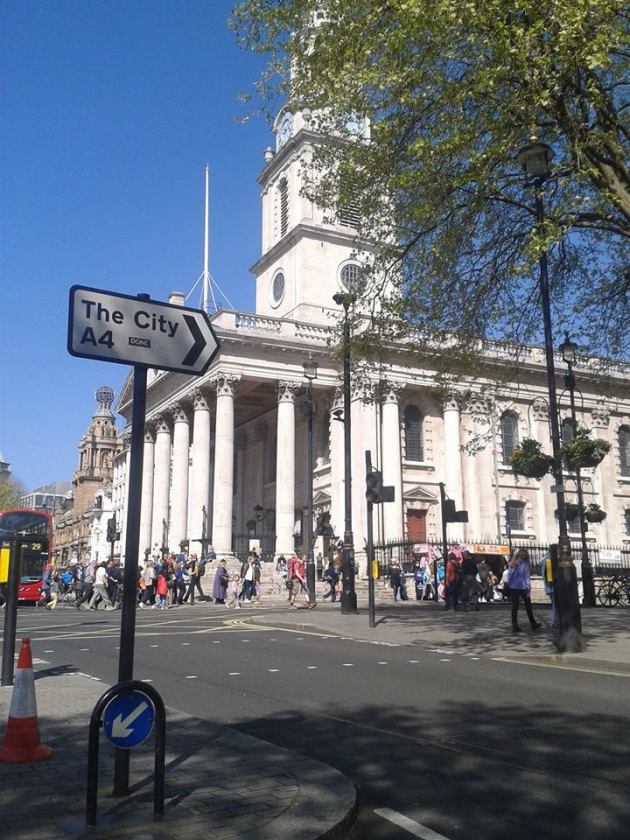Imagine you’re driving into London for the first time from, say, the West Country, along the M4. Let’s say – not because you’re from the West Country, but merely for the purpose of the exercise – that you’ve lived a sheltered life and your knowledge of the capital is fairly limited. After a few hours you’ll have passed the M25 and the Heathrow exits and perhaps started to feel like you’re nearly there. You’ll have left the motorway for the A4 in Chiswick, flown over Hammersmith to Talgarth Road, and continued heading East past the big unloved terraces that line the road through West Kensington. Talgarth Road becomes Cromwell Road, and you pass the imposing Victorian museums in South Kensington and really start to feel like you’re entering the Big City. You carry on East through Knightsbridge, past the world-famous Harrods department store, perhaps glittering with hundreds of yellow bulbs in the dusk.
Next you come to Hyde Park Corner and no doubt traverse it with some trepidation, wary first-time visitor that you are. The buildings are monumental now, and you’ve just swung by the triumphant Wellington Arch (you might in your naivety believe it to be the Marble Arch and snap a selfie – don’t be embarrassed by your mistake, it’s a very fine arch anyway and you’re quite right to admire it) and taken the third exit as your directions dictate.
Now you find yourself rolling gracefully down tree-lined Constitution Hill. That park on your left is the Green Park, Piccadilly’s beyond it, and before you know it Buckingham Palace appears to your right. Perhaps you have to wait a moment while a police motorcade escorts the Queen out on some regal appointment or other, it does happen.
Ahead of you briefly looms iconic Big Ben (we won’t quibble that it’s really Elizabeth Tower, Big Ben being the bell that rings within it, we’re not pedants) before you bear left and sweep majestically down the Mall, through the dazzling Admiralty Arch and into Trafalgar Square, where you’re faced with the National Gallery, the fountains, the Landseer Lions, a fifteen-foot ultramarine cockerel, Nelson’s Column and hundreds of tourists cooing and taking photographs.
Routemaster buses roll by transporting merry Londoners to and from their places of business and leisure. Jolly policemen in tall helmets offer directions and give the time of day. Cheerful cockney cabbies exchange friendly jokes with passing cyclists as the light goes down and the pavements take on a golden hue.
This is Charing Cross, the official centre of London to which all distances are measured, and I would hazard by now that you might think you had arrived. You might imagine it was impossible to get any further into London than this. You would no doubt be unsurprised to see Mary Poppins gliding in to land while Sherlock Holmes examines a red telephone box with his magnifying glass nearby.
This is London alright, in full colour, with all its ceremonial pomp and magnificence.
And yet, if you continue around to the north-eastern side of the square (perhaps you are naively looking for somewhere to park) you will be met by a sign directing you to “The City”.
You could be forgiven for being a little confused. Your directions terminate here. How are you to know this is merely Westminster, the new part of London, this place full of famous sights that attracts a constant flow of millions, and that the place down the road is the City of London, the ancient heart of the capital that was there when all this was marsh, first walled by the Romans but settled long before that? If London isn’t here, you might think, where on Earth is it?
Like the end of a rainbow, the centre of a great city is something that is always just out of reach. London helpfully demonstrates this with a road sign bang in the middle of it that says London, over there, but it is true anywhere. It’s said that when Madonna arrived in New York from Michigan as a twenty year-old with a few dollars in her pocket, she hailed a cab and said to the driver, “take me to the centre of everything”. I’d like to know where he settled on. How do you put your finger on the pulse? How can you pick a crossroads or a roundabout and hoist a flag?
London has many centres. As well as the City and Charing Cross there’s the West End, Parliament Square, Piccadilly and Oxford Circuses, the Marble Arch and the London Eye, a fulcrum if ever there was one. There’s even the new financial centre where that other centre of the docks used to be, the City cloning itself, a mini Manhattan-on-Thames. And that’s without even mentioning the East End – surely no place in London has greater claim to be its core, its pulse, than that bursting centre of immigration and creativity, centuries old. You might say that’s where it all really springs from.
But talk of pulse and springs takes me to the river. The river was the inventor of London, and it rolls on through every day, wild and serene, ancient and wise, while the whole world whirls around it.
There is a field in Gloucestershire from which rises up a magic pond, the water is pristine and shallow, and from one side slips a trickle that is the Thames. From its birth it meanders with stateliness and grace as if it knows already what it must go on to do. That’s the real heart of London, its all-and-nothing and its centre of everything – it lies in a field in Gloucestershire.



Reblogged this on Cool Your Jets IV and commented:
Saw this via the great Urban 75 message board and thought I’d share – enjoy!
Really enjoyed this and hope you don’t mind, I shared on my blog too 🙂
I don’t mind at all, thanks a lot!